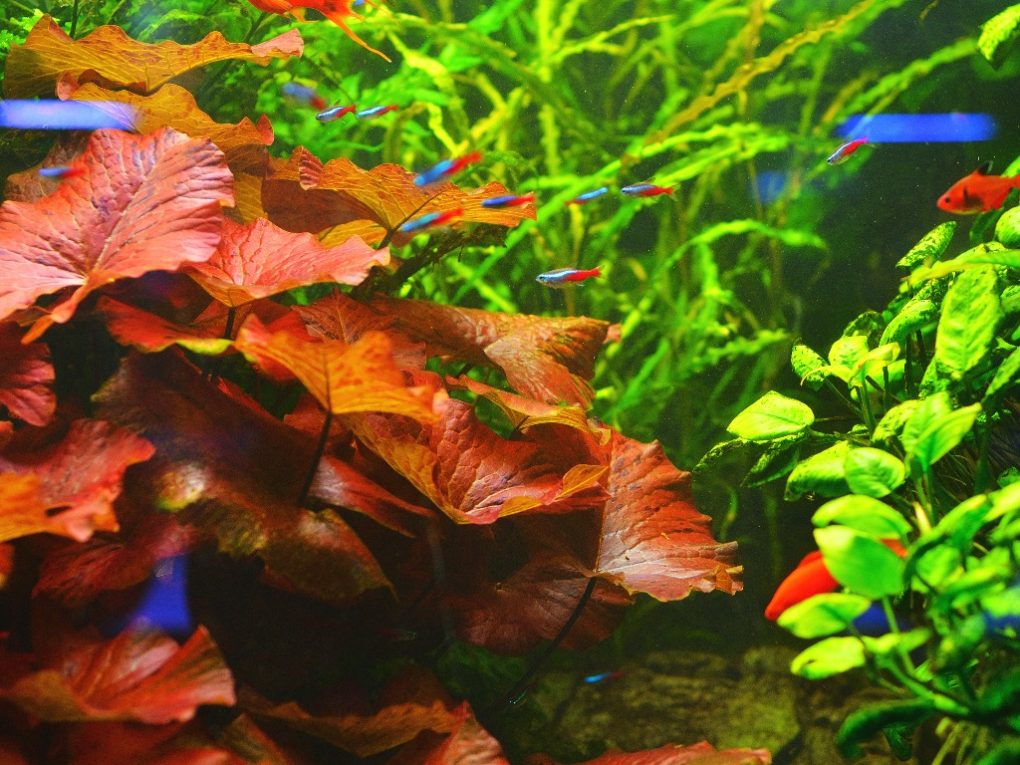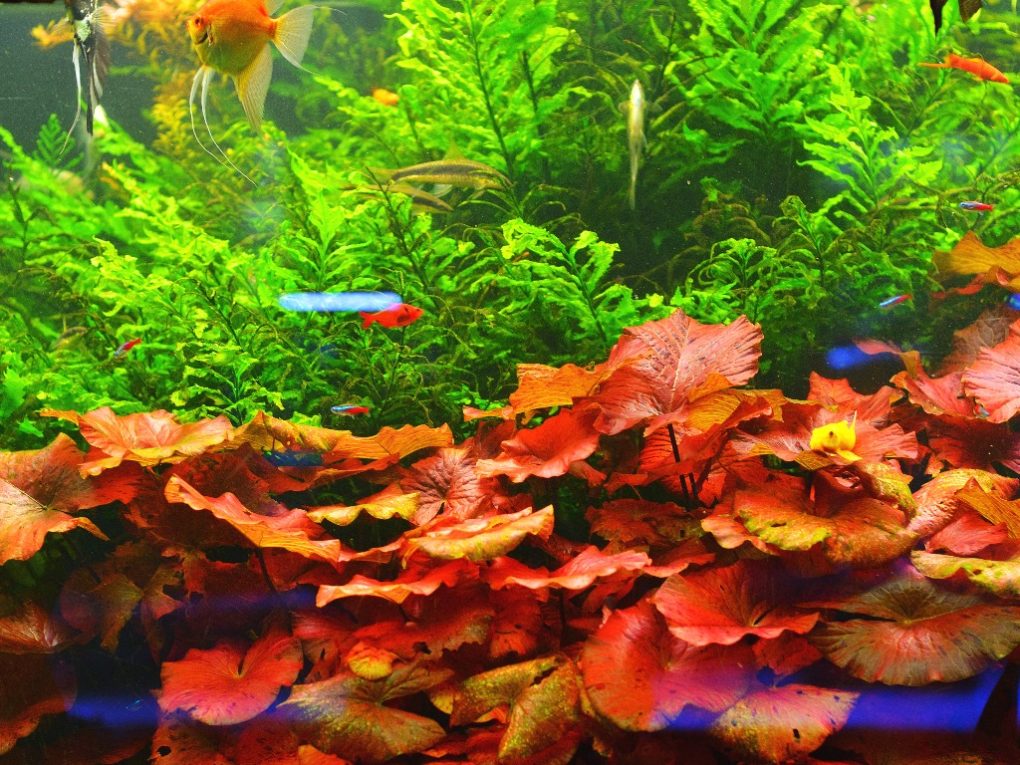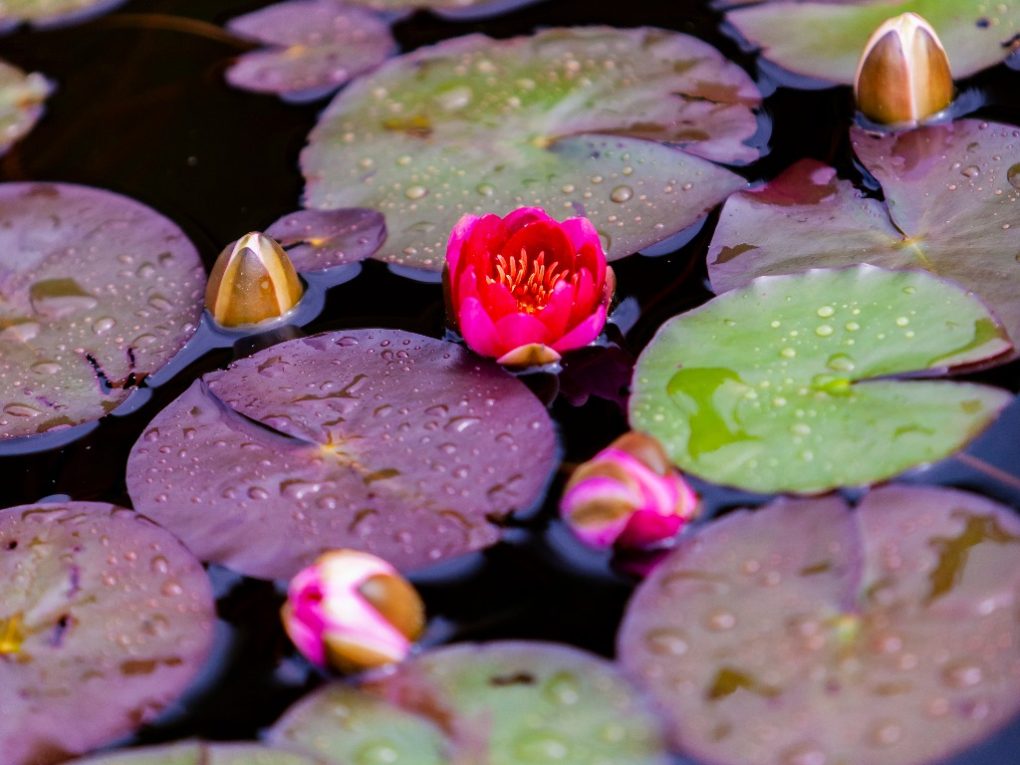Tiger Lotus Aquarium Plant: Everything You Need to Know When Planting Tiger Lotus in a Tank
The red tiger lotus is an aquatic plant that can grow up to 30 inches tall and requires very little maintenance. It thrives in low light levels, making it perfect for aquariums or ponds. The red tiger lotus has delicate leaves that turn different shades of green as they age, adding an extra layer of beauty to your water garden.

Table of Contents
Tank Requirements and Water Parameters
The tiger lotus is the perfect choice if you’re looking for an aquarium plant that will liven up your tank. This fast-growing plant does best in tanks with at least 10 gallons of water and bright light. It doesn’t require much care and is tolerant of a wide range of water parameters.
Tank Size
When it comes to planting tank size, the general rule is that you should have at least a 10-gallon tank for a single plant. Make sure the water is moderately complex – between 6 and 8 on the pH scale. Add some floating plants or rocks to help with aquatic biodiversity and create an aesthetic focal point in your aquarium.
Water Type
You need to be aware of three main water types when setting up a tiger lotus aquarium – soft, hard and alkaline. Tiger lotus needs moderate hardness levels (between 5 and 8 dGH). 4. PH: Keep the pH level between 6 and 8. Keep the tank at a stable temperature of 72 to 82 degrees Fahrenheit.
Lighting
Tiger lotus aquarium plants love bright, indirect light and will do best when placed near a window or artificial light source. However, they also require water parameters to be in the correct range – so it’s essential to test the water regularly and adjust the tank as needed.
Good lighting for tiger lilies can come from either high-intensity discharge (HID) or fluorescent lamps. Make sure you buy a lamp with an adjustable height to customize the lighting levels according to your plants’ needs.
Substrate
Tiger lotus aquarium plants need a substrate that is sandy or gritty in texture, and they should be kept in moderate lighting with suitable water parameters.
Supplements
As tiger lotus aquarium plants require a lot of water and nutrients, it is crucial to ensure the tank has the correct water parameters. These plants need supplements such as trace elements or aquatic food to help them thrive.
It’s also essential to monitor the growth of tiger lotus aquarium plants – if they get too big or out of control, you will have to take appropriate measures (i.e., pruning)
Planting and Propagation of Red Tiger Lotus

Red tiger lotus plants are beautiful and easy to grow. They are perfect for beginners who need bright, indirect sunlight and medium water levels to thrive. Once you have rooted the cutting, transfer it to a pot filled with fresh soil and water. Enjoy your beautiful red tiger lotus plants in your aquarium or garden!
How to Contain the Root System
Adding a tiger lotus aquarium plant to your home can be a beautiful and rewarding experience. However, be aware of the plant’s demanding requirements, and be prepared to monitor and adjust its root system regularly.
There are several ways to contain the root system, so finding one that works best for you is crucial. Once you’ve found a method that works, monitor regularly and adjust it as needed.
Remember, a tiger lotus aquarium plant is a beautiful addition to any home, but be prepared for the challenge of keeping it healthy and happy!
Trimming and “Training” Red Tiger Lotus
Red tiger lotus plants are beautiful and delicate plants that can grow up to 30 inches. They thrive in an environment with high humidity and indirect sunlight and need water kept at a consistent depth to prevent the roots from expanding downward excessively.
Before trimming the leaves, it is crucial to understand the plant’s basic needs. Cutting the leaves should be done at least every two weeks during active growth, as the leaves can grow long!
Pruning
Aquarium lotus can quickly grow into a wild beauty in your aquarium, so it’s essential to keep an eye on it and prune it regularly to keep it in check. Pruning an aquarium lotus is best done with a pair of sharp scissors held at a 45-degree angle.
Ensure to rinse the cutting surfaces after every cut thoroughly; otherwise, you might get any diseases transferred from the fish tank onto your garden plants!
Maintenance and Care
This beautiful water lily requires minimal maintenance and is perfect for those new to aquarium keeping. Keep your red tiger lotus aquarium plant healthy with occasional water changes and feed it a balanced diet of high-quality fish food to keep the tank clean and free from algae growth.
When handling your aquarium plant, be careful not to bruise or damage it – you can easily damage this delicate plant.
Common Problems With Red Tiger Lotus

Red tiger lotus aquarium plants are beautiful and quite popular, but they have some common problems. Watch out for pests, water temperature, level, and fertilizing schedule.
Overgrowth
Overgrowth is one of the most common problems with red tiger lotus. As the plant grows, it can overtax the tank’s ecosystem and damage it. If this happens, you’ll need to take measures to trim back the plants and adjust your water parameters as necessary to prevent overgrowth from happening again.
Fluctuating Water Temperatures
Since tiger lotus is not as tolerant to fluctuating water temperatures, keeping the tank at a constant temperature is essential. However, if the water temperature falls below the ideal, the plant will show signs of stress and may even die.
Changing 20% of your water monthly is also advisable for the plants to stay healthy and hydrated. Remember to adjust your aquarium acidity accordingly if you find the need to!